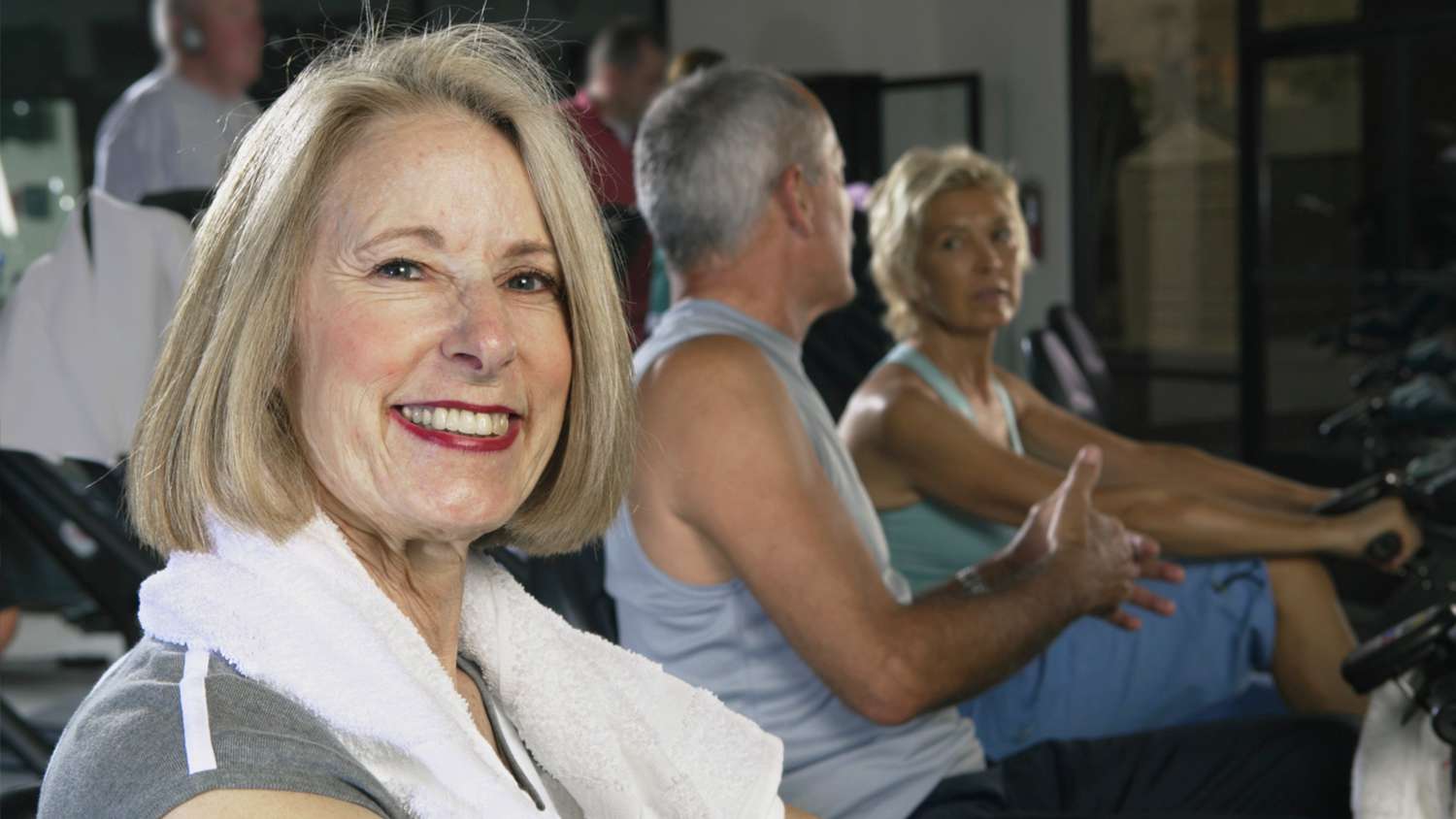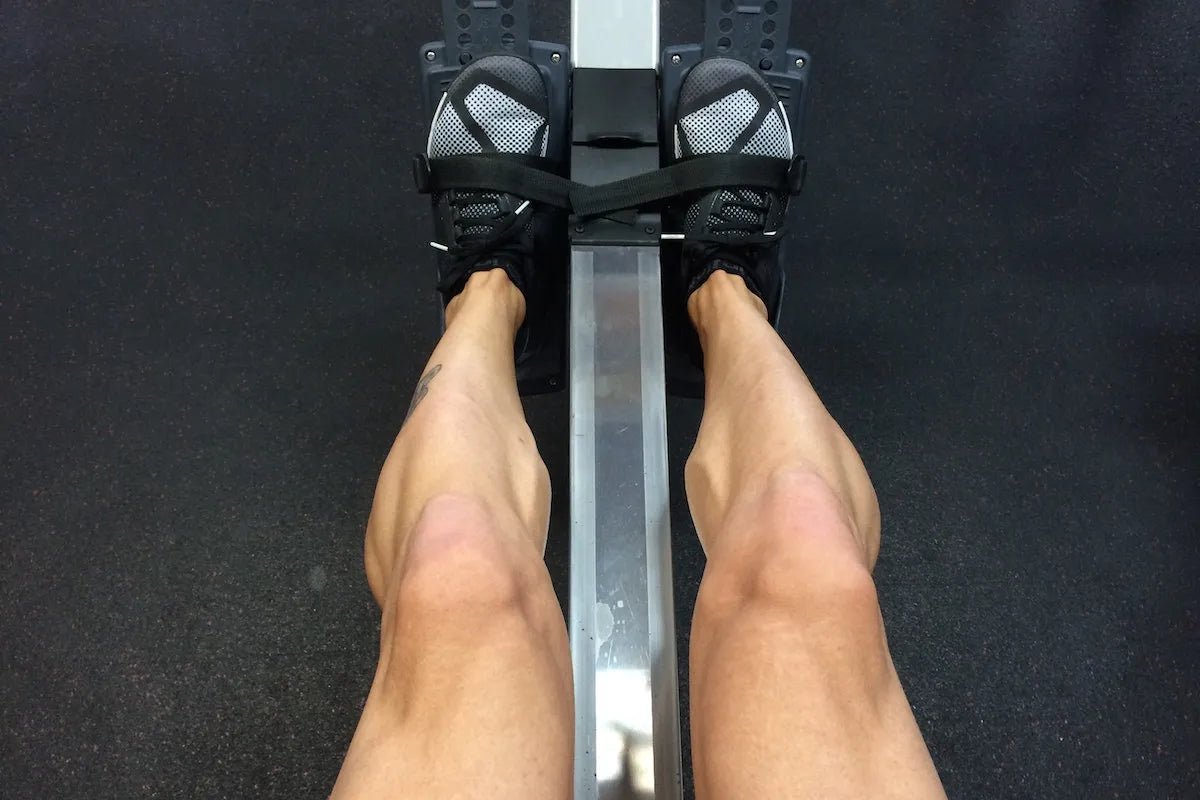Wenn es um Cardiogeräte geht, gibt es keine allgemeingültige Antwort. Ob Sie neue Möglichkeiten für Ihr Training erkunden oder Ihre Routine aufpeppen möchten, die Wahl zwischen einem Rudergerät und einem Crosstrainer hängt von Ihren persönlichen Zielen, Ihrem Fitnessniveau und dem verfügbaren Platz ab. Beide Geräte bieten hervorragende Workouts mit geringer Belastung, erfüllen jedoch unterschiedliche Anforderungen. Lassen Sie uns dies aufschlüsseln, damit Sie die beste Wahl treffen können.
Die Maschinen verstehen
So funktioniert ein Rudergerät
Ein Rudergerät imitiert die Bewegung des Ruderns auf dem Wasser und ermöglicht Ihnen ein Ganzkörpertraining, das Cardio-Training mit leichtem Widerstandstraining kombiniert. Die Nutzung eines Rudergeräts beinhaltet:
- Drücken Sie mit den Beinen, um die Bewegung voranzutreiben.
- Lehnen Sie sich leicht nach hinten, um Ihre Körpermitte anzuspannen.
- Ziehen Sie den Griff zur Brust, um Ihre Arme und Ihren Rücken zu aktivieren.
Rudergeräte bieten ein rhythmisches, meditatives Training, das Ihren Ober- und Unterkörper gleichzeitig fordert.
So funktioniert ein Ellipsentrainer
Ein Ellipsentrainer simuliert Laufen oder Gehen ohne Belastung Ihrer Gelenke. Er kombiniert die Bewegungen eines Treppensteigers und eines Heimtrainers und sorgt für eine sanfte, gleitende Bewegung. Die meisten Ellipsentrainer verfügen über bewegliche Arme, die ein Ganzkörpertraining ermöglichen, bei dem Ober- und Unterkörper beansprucht werden.
Bei Verwendung eines Ellipsentrainers:
- Stehen Sie aufrecht und halten Sie den Lenker fest.
- Bewegen Sie Ihre Beine in einer laufähnlichen Bewegung und rollen Sie über die gesamte Länge Ihres Fußes.
- Passen Sie den Widerstand oder die Neigung für mehr Intensität an.
Vorteile der einzelnen Maschinen
Vorteile eines Rudergeräts
- Ganzkörpertraining: Rudergeräte trainieren große Muskelgruppen, darunter Beine, Rumpf, Rücken und Arme.
- Baut Ausdauer und Kraft auf: Das Widerstandselement hilft, die Muskelkraft zu verbessern und gleichzeitig die kardiovaskuläre Ausdauer zu steigern.
- Stressabbau: Die wiederholte Ruderbewegung kann meditativ wirken und hilft, Stress abzubauen und die geistige Klarheit zu steigern.
- Kalorienverbrennung: In Verbindung mit der richtigen Ernährung unterstützt Rudern die langfristige Gewichtskontrolle.
- Kompaktes Design: Viele Rudergeräte lassen sich zur einfachen Aufbewahrung zusammenklappen und sind daher ideal für das Fitnessstudio zu Hause.
VERWANDTE THEMEN: Rudergerät-Training für Senioren: Vorteile und Tipps
Vorteile des Ellipsentrainers
- Gelenkschonende Bewegung: Ellipsentrainer sind außerordentlich gelenkschonend und daher eine gute Option für Menschen mit Arthritis oder Knieschmerzen.
- Vielseitige Workouts: Passen Sie Neigung, Widerstand und Richtung an, um gezielt Muskelgruppen wie Gesäß, Oberschenkel oder Waden zu trainieren.
- Verbessert das Gleichgewicht: Die Gleitbewegung stärkt die Rumpfmuskulatur und verbessert mit der Zeit das Gleichgewicht und die Beweglichkeit.
- Ideal für Anfänger: Ellipsentrainer sind für Fitness-Einsteiger intuitiv und einfach zu bedienen.
- Doppelte Aktion: Durch die zusätzlichen beweglichen Griffe können Sie das Oberkörpertraining problemlos integrieren.
Wichtige Gemeinsamkeiten zwischen Rudergeräten und Ellipsentrainern
- Low-Impact: Beide Geräte sind gelenkschonend und daher für viele Fitnesslevel geeignet.
- Cardio- und Muskeltraining: Beide bieten eine Mischung aus Herz-Kreislauf-Training und Krafttraining und trainieren sowohl die Muskulatur des Ober- als auch des Unterkörpers.
- Anfängerfreundlich: Einfach zu erlernen und zu verwenden mit minimalem Verletzungsrisiko.
- Vielseitigkeit: Beide Geräte können für Steady-State-Cardio- oder hochintensives Intervalltraining (HIIT) verwendet werden.
Wichtige Unterschiede zwischen Rudergeräten und Ellipsentrainern
| Besonderheit | Rudergerät | Elliptisch |
|---|
| Körperposition | Sitzend | Aufrecht |
| Primäre Muskeln | Rücken, Gesäß, Oberschenkelrückseite und Rumpf | Quadrizeps, Waden, Deltamuskeln und Rumpf |
| Bewegungsbereich | Bilateral und horizontal | Aufrecht und gleitend |
| Platzbedarf | Kompakt und oft faltbar | Größere Standfläche mit mehr vertikaler Fläche |
| Preisklasse | 500–1.100 $ (Einstiegs- bis Mittelklassemodelle) | 800–3.000 $ (einfache bis kommerzielle Einheiten) |
| Eignung für Knie | Erfordert eine Kniebeugung über 100 Grad | Schonender für die Knie durch geringere Beugung |
Was ist besser für Ihre Ziele?
Wenn Sie Ganzkörperkraft und Cardio wollen
Wählen Sie ein Rudergerät. Es trainiert bei jedem Schlag 86 % Ihrer Muskeln und kombiniert Cardio mit leichtem Widerstandstraining.
Wenn Sie ein gelenkschonendes Training benötigen
Entscheiden Sie sich für einen Crosstrainer. Er ermöglicht ein flüssiges, stoßfreies Training mit minimaler Belastung der Gelenke.
Wenn Sie nur wenig Platz haben
Rudergeräte benötigen in der Regel weniger Platz und viele Modelle lassen sich zur einfacheren Lagerung zusammenklappen.
Wenn Sie Einfachheit bevorzugen
Ellipsentrainer ermöglichen eine intuitivere Bewegung und sind perfekt für Anfänger, die ein schonendes Cardio-Training suchen.
Endgültiges Urteil: Rudergerät vs. Ellipsentrainer
Sowohl das Rudergerät als auch der Crosstrainer eignen sich hervorragend für schonendes Cardio- und Krafttraining. Ihre Entscheidung hängt letztendlich von Ihren Fitnesszielen, Vorlieben und der Einrichtung Ihres Heim-Fitnessstudios ab.
- Wählen Sie ein Rudergerät , wenn Sie ein kompaktes Ganzkörpertraining mit Kraftaufbauelementen wünschen.
- Wählen Sie ein Ellipsentrainer , wenn Sie nach einer gelenkschonenden, aufrechten Cardio-Option mit vielseitigen Widerstands- und Neigungseinstellungen suchen.
FAQs
1. Was verbrennt mehr Kalorien: Rudern oder Crosstrainer?
Der Kalorienverbrauch hängt von Ihrer Intensität, Körpergröße und Ihrem Fitnesslevel ab. Beide Geräte verbrennen bei mittlerer Intensität eine ähnliche Menge an Kalorien. Die beste Option ist also die, die Ihnen am meisten Spaß macht und die Sie regelmäßig verwenden.
2. Ist ein Rudergerät oder ein Crosstrainer besser für schlechte Knie?
Ellipsentrainer sind im Allgemeinen besser für Menschen mit Knieproblemen geeignet, da sie keine tiefe Kniebeugung erfordern. Konsultieren Sie jedoch immer Ihren Arzt, bevor Sie ein neues Trainingsprogramm beginnen.
Egal, ob Sie rudern, gleiten oder beides machen, Beständigkeit ist der Schlüssel. Wählen Sie das Gerät, das Ihren Zielen entspricht, und genießen Sie den Weg zu besserer Gesundheit!


